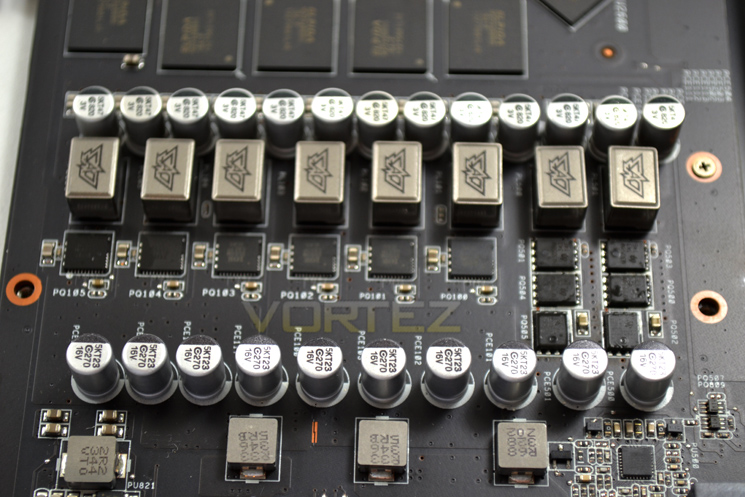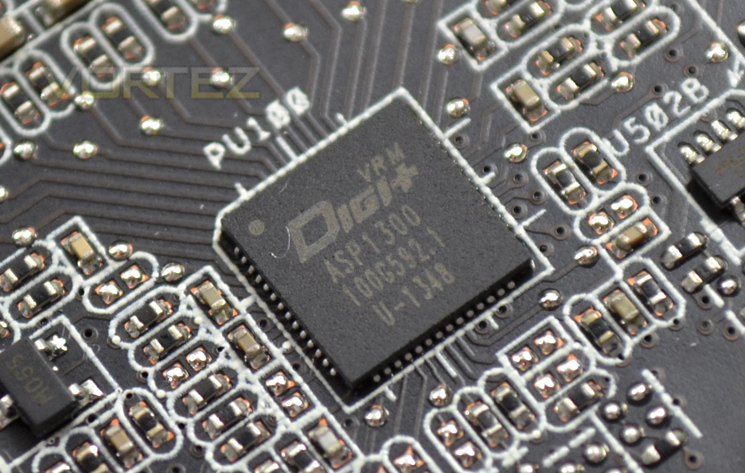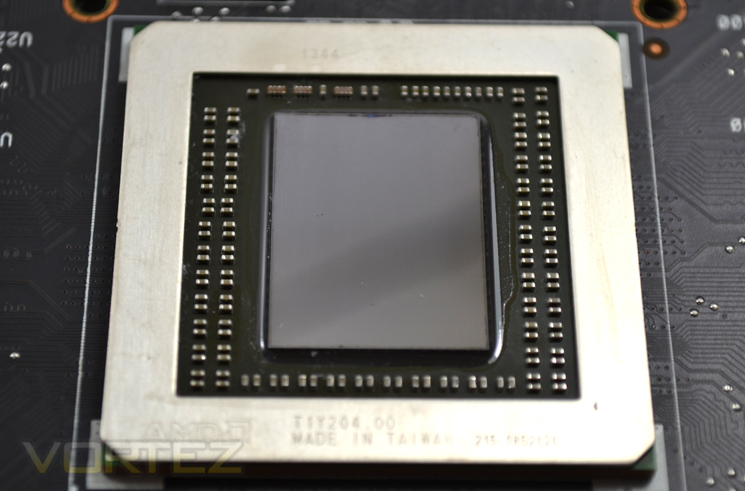
Removing the main cooler was a cinch thanks to just four spring loaded screws holding the DirectCU II cooler to the core. Removing the backplate would require the removal of more screws but for a simple GPU paste change this would be unnecessary.

As you can see, the baseplate (or lack of one) makes direct contact with the core. There are 5 heatpipes in total and while only 3 make direct contact with the core, they will all assist in spreading the heatdump to the single piece aluminium finned heatsink array.

All four Gigabytes of Vram are found on the inside of the card with 16x256mb making up the total 4096MB GDDR5 available. The VRM area features a separate cooling plate and is made up of DIGI+ components.

The cooling plate is removed by a further two screws and has a thermal interface pad to assist in heat transfer from the 8 phase power VRM. A separate 2 phases are afforded on the adjacent end of the card that do not receive direct cooling. All of the components make up ASUS' DIGI+ Super Alloy Power which reduces electrical noise by 30% while increasing power efficiency by 15%.

Keeping the voltages in check (or indeed allowing the end user to adjust them is this little DIGI+ voltage controller.

The memory chips are provided by Elpida which are not as well received as Sk Hynix but we will reserve our judgement for the overclocking section.

Lastly, we reach the core which for all intents and purposes is the same Hawaii core used on the flagship R9 290X with a few shaders disabled. We did check to see if these shaders could be unlocked but sadly it wasn't to be on this sample.
Let's take a look at our test setup...





